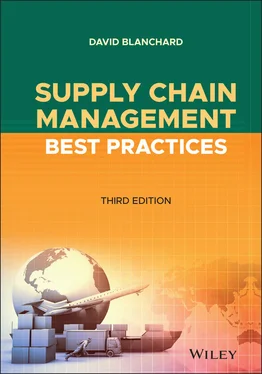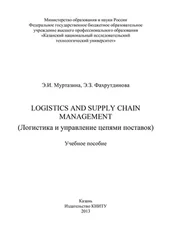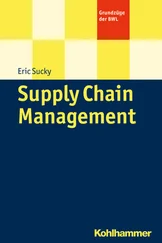1 ...7 8 9 11 12 13 ...17 One of the big problems, however, isn't the manufacturers but the hospitals themselves. “Healthcare is the only industry in the world that has not converted to a data synchronization-common format that uses bar coding to track products through the system,” points out Brent Johnson, vice president of supply chain with Intermountain Healthcare, a not-for-profit system of 24 hospitals throughout Utah, Idaho, and Nevada. There is a distinct lack of trust between the hospitals and their suppliers, Johnson says, which he hopes is starting to improve. “We'd like to break down the barriers between us and the suppliers, and through increased trust and collaboration continue to not only reduce costs but improve outcomes and quality.”
Gaining that trust at Intermountain began, Johnson explains, by adopting lean practices to drive out waste from the healthcare system's cost structure. “We started by simplifying our supply chain, which meant we had to take over the contracts from third parties and distributors.” Intermountain alerted roughly 150 suppliers that instead of sending their products to a distributor, they needed to start shipping them directly to Intermountain. The next step, Johnson continues, was to hire inventory control specialists from outside the healthcare industry who were experts at managing inventory from the suppliers' factories all the way into Intermountain's warehouse.
Doctors and nurses would often order products they were familiar with and believed were essential to patient care. However, many of those products were commodities, so by enlisting input from nursing product committees, Intermountain was able to reduce the number of SKUs it was ordering by more than half—from 13,000 to 5,000. The healthcare system also built a Supply Chain Center, which includes a distribution center, materials management, logistics, and administration facilities, and is powered by various supply chain technologies, including warehouse management software, an automated conveyor system, and a cubing and dimensioning system to create a more efficient process at the loading dock. Within two years the center helped reduce supply chain costs by $80 million. 14
Industrial Products: Diversity in the Supply Chain
The business case for diversity, equity, and inclusion has been supported by numerous studies, such as McKinsey & Company's research, which says that public companies having the most gender, ethnic, and racial diversity are more productive, more profitable, and enjoy more revenues from new products and services. 15 When it comes to diversity, not only does 3M, a publicly-held industrial conglomerate, have a very diverse product line—serving the automotive, construction, consumer, high-tech, energy, government, healthcare, safety, and transportation markets—but the company sees a very real advantage in having a diverse workforce as well, one that openly encourages experimentation and creativity. 16
“At 3M, we want our employees to reinvent themselves and their career at one company,” says Kathie Karls-Bilski, HR director for 3M Supply Chain. Referencing the numerous industry sectors the company serves, she observes, “You can reinvent yourself and your career without ever leaving 3M, to the benefit of both your own personal growth and our company's.” That kind of an open environment gives 3M an advantage when seeking to hire talent from the Millennial generation. “As Baby Boomers leave the workforce and Millennials make up a more significant part of it, many manufacturers believe that this generation will change manufacturing,” and in fact, she says, that change is already under way as supply chains are becoming more digitized. “Millennials' ability to transform organizations' slow processes into fast, effective business success will help manufacturing and supply chains grow for years to come,” Karls-Bilski says. 17
As a company, 3M focuses on four priorities—Portfolio, Innovation, Transformation, and People and Culture—all of which are seen as key to 3M achieving long-term growth and value creation. The company, which employs over 93,000 worldwide, has set a goal of doubling its pipeline of diverse talent in management roles by 2025. As of 2020, 3M's workforce diversity was at 42%, which the company says represents 29% progress toward its goal. 18
According to analyst firm Gartner (which ranks 3M as having one of the Top 25 supply chains in the world), 3M is creating a new global operating model that will give each of its business segments the authority to develop strategy, optimize its portfolio, and prioritize resources. As part of that effort, 3M is consolidating its supply chain (which includes manufacturing) under its enterprise operations organization to become more efficient throughout its end-to-end supply chain. 19
Oil and Gas: Managing the Managers
Multinational oil and gas companies like Royal Dutch Shell manage supply chains that are said to flow both upstream and downstream. Shell's upstream supply chain includes all activities involved in the exploration and production of the raw materials, such as offshore and oil field drilling. The downstream supply chain involves the refining process and the delivery of finished products such as motor oil and gasoline to the end customer. In the course of its business, Shell routinely uses third-party logistics providers (3PLs) to manage various logistics activities for its upstream operations. However, the development of unconventional gas resources (such as shale gas) was becoming too costly, was taking too much time, and was proving to be far too dangerous for the typical pool of logistics providers. Too many different 3PLs and local carriers were involved in the transportation of the gases, making both supply chain planning and execution inconsistent.
The answer for Shell was to team up with consulting firm Accenture to develop a fourth-party logistics provider (4PL) solution. A 4PL basically manages all the 3PLs under contract to a company, the difference being that the 4PL only has one client—in this case, Shell. The 4PL, known as Logistics Management Services (LMS), was tasked with developing long-term relationships that would give Shell access to top experts in transportation, logistics planning, technology, and safety. Rather than having the unconventional gas operations spread among various silos (procurement, planning, production), LMS brought oversight to the entire process. The payoff was impressive: Shell reduced its logistics costs by 25% due to better asset utilization, and eliminated roughly two million highway miles thanks to better transportation planning and scheduling. Fewer trips also helped reduce the truck drivers' exposure to safety hazards. 20
Shell is also implementing various advanced supply chain technologies throughout its operations. For instance, the company is using analytics-based track and trace technology to gain better inventory visibility throughout the procurement, transportation, and disposal of engineering materials. 21 Shell also uses artificial intelligence–based predictive maintenance in several applications—both upstream and downstream—that alert the company when equipment will fail before it actually fails. 22
Pharmaceuticals: Innovation in Real Time
Pharmaceutical giant Johnson & Johnson is best known for its consumer brands, from Benadryl to Listerine to Motrin to its eponymous baby powder. But given the company's aggressive spend every year on research and development (over $11 billion in 2019), it's fair to say the company's supply chain is as dependent on technology as it is on logistics—or more accurately, the two go hand-in-hand.
“We see ourselves as not only a healthcare company but also as a technology company because technology is dramatically changing the landscape of what's possible for us,” says Kathy Wengel, executive vice president and chief global supply chain officer for Johnson & Johnson. And one of the biggest change agents for J&J is the Internet of Things (IoT), a technology that lets connected devices communicate with each other, using sensors, radio frequency identification (RFID), performance data, and of course the Internet itself. 23
Читать дальше












